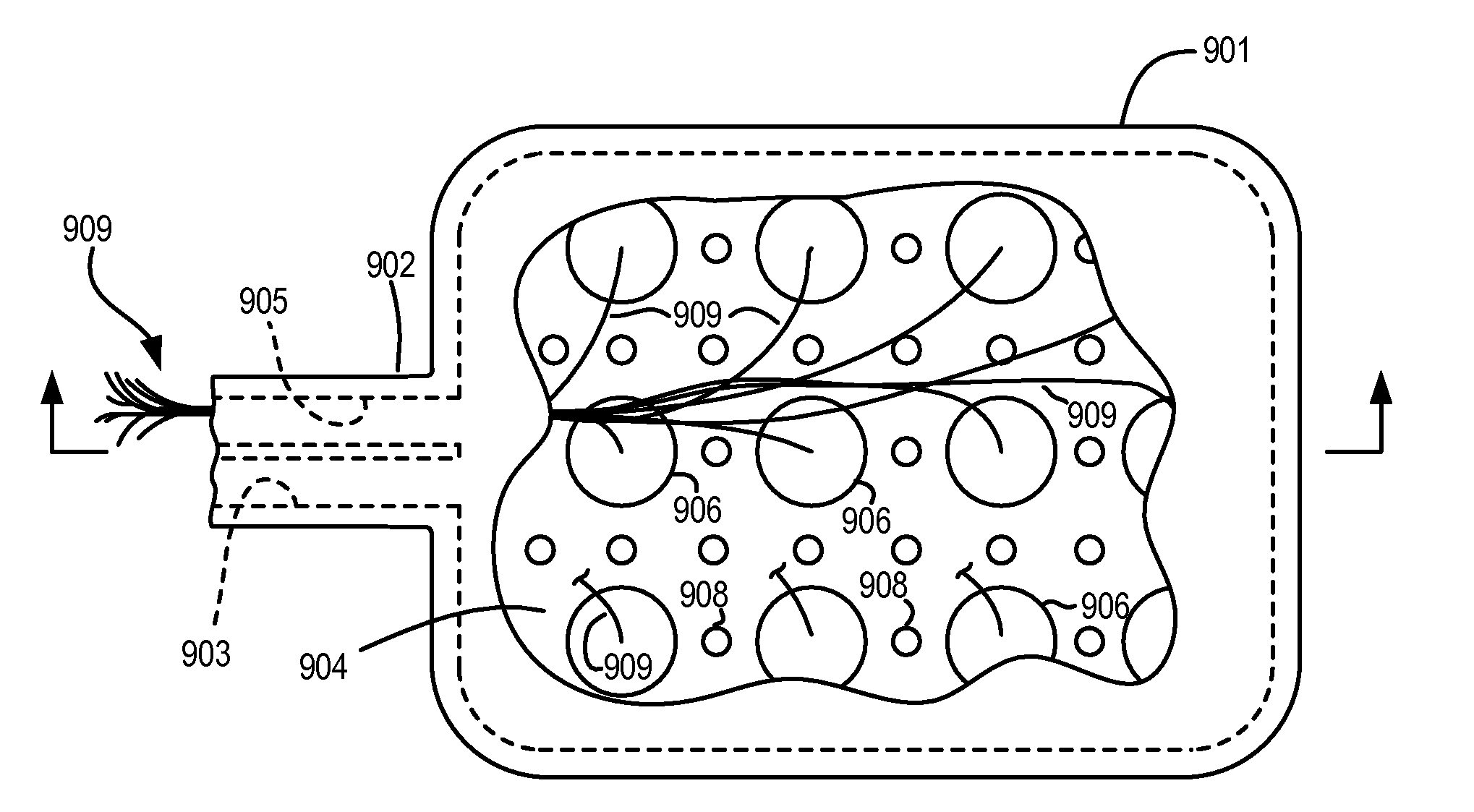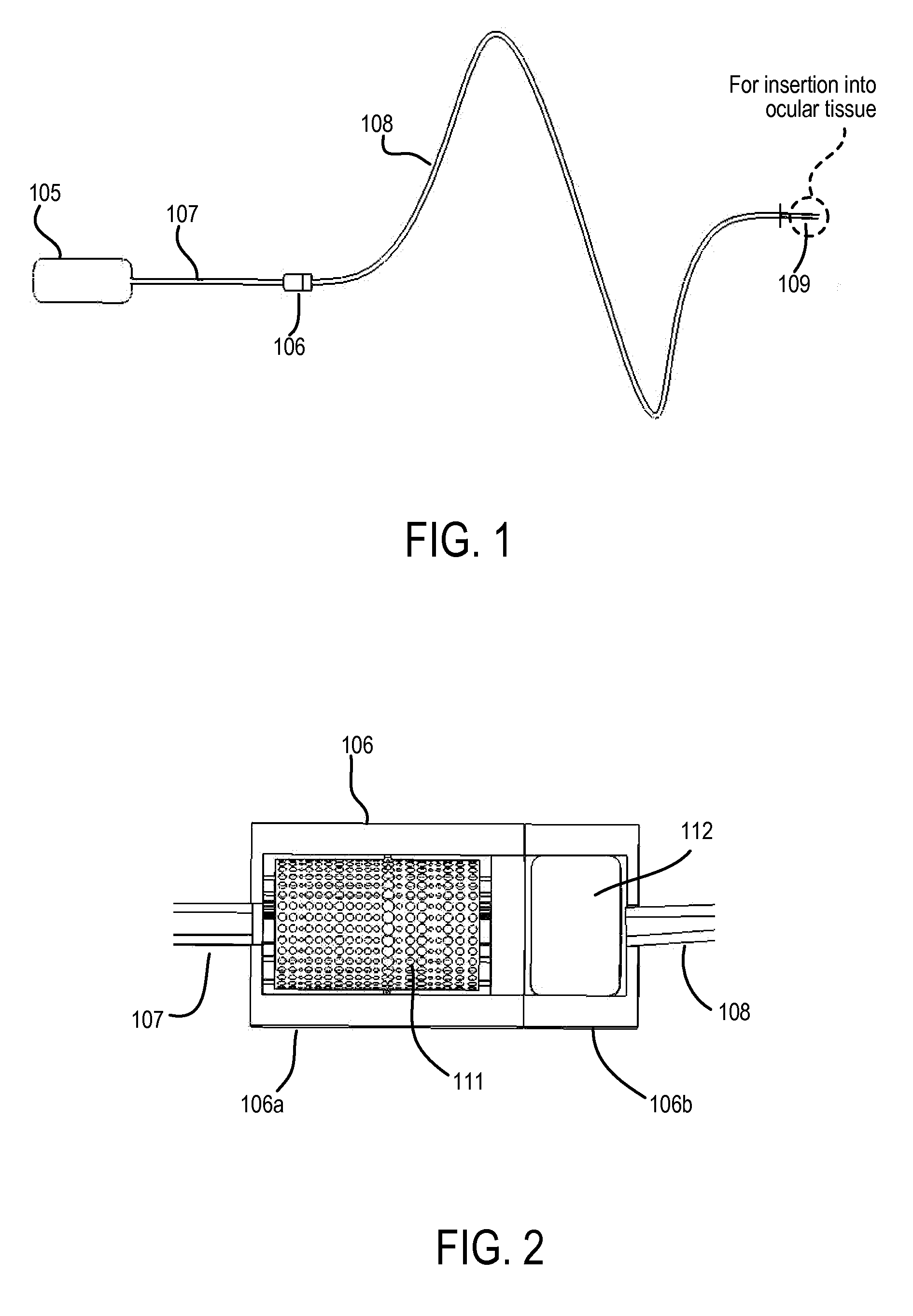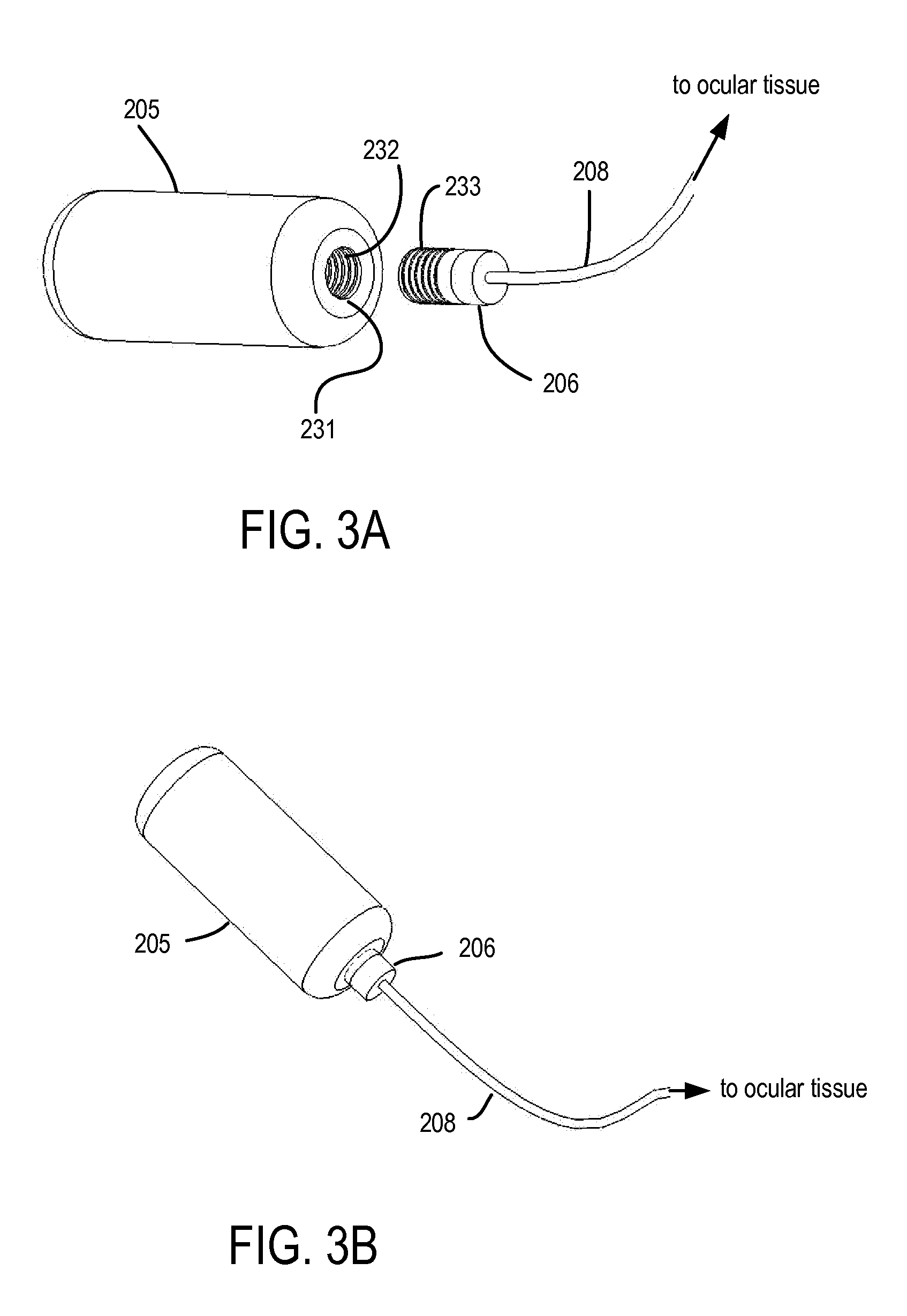Devices, Systems and Methods for Ophthalmic Drug Delivery
- Summary
- Abstract
- Description
- Claims
- Application Information
AI Technical Summary
Benefits of technology
Problems solved by technology
Method used
Image
Examples
example 1
Fabrication of Pellets of Gacyclidine Base
[0136]Water (500 mL) was brought to a boil. This hot water bath was then used to melt solid gacyclidine base. After placing 35 mg of gacyclidine base in a small glass vial, the vial was incubated in the hot water bath (90-100° C.) until the gacyclidine base melted. Small aliquots (2 μL) of the melted gacyclidine base were then transferred to polypropylene tubes (1.5 mL in size) and allowed to stand at room temperature until the gacyclidine base had solidified.
[0137]Solidification of the melted gacyclidine is typically complete within 30 minutes, but can occasionally take many hours. About half of the time, a single solid mass is obtained that slowly grows from a single focus. For those aliquots that result in multiple smaller crystalline / amorphous masses on standing, the tube containing the aliquot can be incubated in a hot water bath (90-100° C.) until it is melted a second time. Upon cooling, a second crop of single solid masses will be ob...
example 2
Dissolution of Gacyclidine Base in a Continuous Flow Reactor
[0139]A drug chamber similar to the one illustrated in FIG. 5 was loaded with 11 pellets of gacyclidine base having a combined mass of 18 mg. This drug-loaded chamber was eluted at a flow rate of 20 μL / hr at room temperature (23±2° C.) using a MiniMed 508 syringe pump (available from Medtronics MiniMed of Northridge, Calif.). The syringe was loaded with 3 mL of Ringer's solution containing 0.05 to 3 mM hydrochloric acid. The eluted volume was collected in PTFE tubing attached to the pump drug capsule assembly, after a 3-D antibacterial filter. The pH of this solution was determined by use of a pH meter equipped with a Calomel electrode. Drug concentration was determined by HPLC.
[0140]The highest pH of the eluted drug solution (5.9) was obtained at 0.05 mM hydrochloric acid, and the lowest pH of the eluted drug solution (5.6) was obtained at 3 mM hydrochloric acid. These pH values indicate quantitative conversion of the hydr...
example 3
Preparation of Gacyclidine Base Pellets from Solutions of Gacyclidine Hydrochloride
[0141]Aqueous stock solutions of 1.0 M gacyclidine hydrochloride (299.9 mg / mL) and 1.0 M NaOH were prepared. Equal volumes of these solutions were mixed in a 1.7 mL polypropylene vial, then subjected to 30,000-times gravity centrifugal force in a Hermle Z229 minicentrifuge for 5 minutes. Gacyclidine base separated out during centrifugation as an oil and collected at the bottom of the centrifuge tube. Between 7 minutes and 2 hours following mixing of the solutions, the liquid gacyclidine base solidified into a single mass. The aqueous supernatants above the drug pellets were removed by aspiration by use of a sterile needle and syringe. The volumes mixed and the weights of drug pellets recovered are tabulated in Table 5.
TABLE 5Vol. of 1 MVol. of 1 MWt. of Drug PelletWt. of DrugGacyclidineNaOHRecoveredPellet ExpectedYield(μL)(μL)(mg)(mg)(%)20203.2653404010.31286606014.21879808018.9247910010025.4308512012...
PUM
| Property | Measurement | Unit |
|---|---|---|
| Luminous flux | aaaaa | aaaaa |
| Size | aaaaa | aaaaa |
| Size | aaaaa | aaaaa |
Abstract
Description
Claims
Application Information
 Login to View More
Login to View More - R&D
- Intellectual Property
- Life Sciences
- Materials
- Tech Scout
- Unparalleled Data Quality
- Higher Quality Content
- 60% Fewer Hallucinations
Browse by: Latest US Patents, China's latest patents, Technical Efficacy Thesaurus, Application Domain, Technology Topic, Popular Technical Reports.
© 2025 PatSnap. All rights reserved.Legal|Privacy policy|Modern Slavery Act Transparency Statement|Sitemap|About US| Contact US: help@patsnap.com



